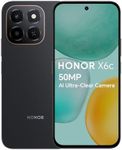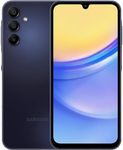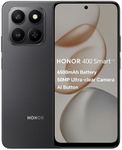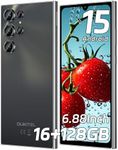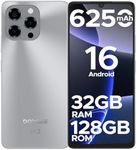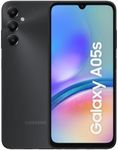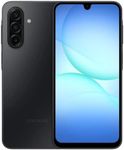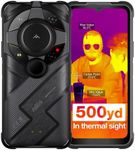Buying Guide for the Best Budget Gaming Phone
When choosing a budget gaming phone, it's important to focus on the features that will enhance your gaming experience without breaking the bank. The key is to find a balance between performance, display quality, battery life, and other features that contribute to a smooth and enjoyable gaming session. Consider what types of games you play most often and what aspects of gaming are most important to you, such as graphics, speed, or battery life. This will help you prioritize which specifications to focus on when making your decision.Processor (CPU)The processor, or CPU, is the brain of your phone and plays a crucial role in determining how well your games will run. A powerful processor can handle more complex graphics and faster gameplay, which is essential for a good gaming experience. In budget gaming phones, you might find processors ranging from entry-level to mid-range. Entry-level processors are suitable for casual games and basic tasks, while mid-range processors can handle more demanding games with better performance. If you play graphics-intensive games, aim for a phone with a mid-range processor to ensure smoother gameplay.
Graphics Processing Unit (GPU)The GPU is responsible for rendering images, animations, and video for the phone's display, making it a critical component for gaming. A good GPU will ensure that games run smoothly and look great. In budget phones, GPUs can vary significantly. Basic GPUs are fine for simple games, but for more graphically demanding games, look for a phone with a more capable GPU. If you enjoy visually rich games, prioritize a phone with a stronger GPU to enhance your gaming experience.
RAMRAM, or Random Access Memory, is important for multitasking and running games smoothly. It allows your phone to store and quickly access data needed for active applications. More RAM means your phone can handle more processes at once, which is beneficial for gaming. Budget gaming phones typically offer between 3GB to 6GB of RAM. For casual gaming, 3GB might suffice, but for more demanding games or if you like to switch between apps frequently, aim for at least 4GB to 6GB of RAM.
DisplayThe display is where you interact with your games, so its quality can greatly affect your gaming experience. Key factors include size, resolution, and refresh rate. A larger screen can make games more immersive, while a higher resolution provides clearer and more detailed images. Refresh rate, measured in hertz (Hz), indicates how many times the screen updates per second; a higher refresh rate results in smoother motion. For budget gaming phones, a display size of around 6 inches with a resolution of at least 1080p and a refresh rate of 60Hz is a good starting point. If you prioritize smooth gameplay, look for a phone with a higher refresh rate.
Battery LifeGaming can be power-intensive, so a phone with good battery life is essential to avoid frequent charging. Battery capacity is measured in milliampere-hours (mAh), and a higher number generally means longer battery life. Budget gaming phones often have batteries ranging from 3000mAh to 5000mAh. If you play games for extended periods, aim for a phone with at least 4000mAh to ensure you can game longer without needing to recharge. Consider your gaming habits and choose a battery capacity that aligns with your usage.
StorageStorage is where your games, apps, and media are kept. Games, especially high-quality ones, can take up a lot of space, so having enough storage is important. Budget gaming phones typically offer between 32GB to 128GB of internal storage. If you play a lot of games or store media on your phone, consider a model with at least 64GB of storage. Additionally, check if the phone supports expandable storage via a microSD card, which can be a cost-effective way to increase storage capacity.
